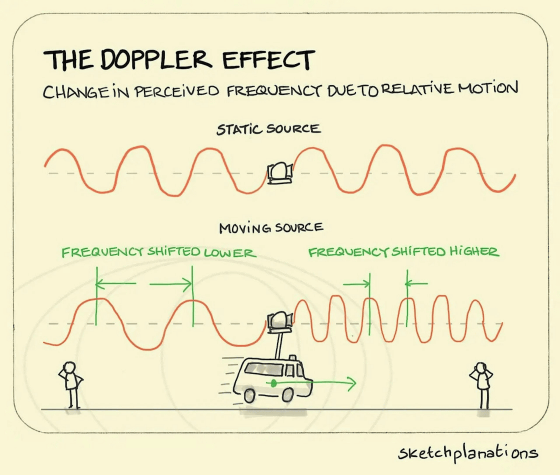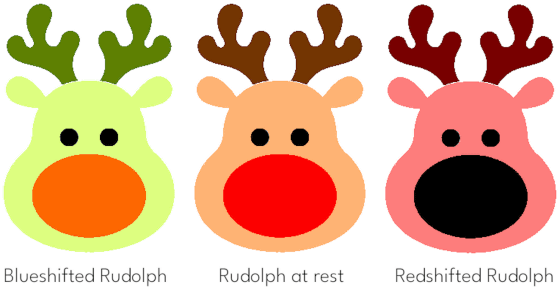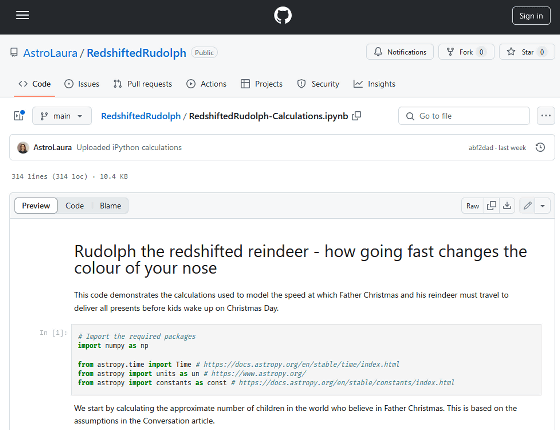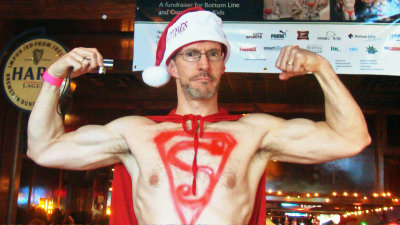Astronomers calculate Santa's speed, so fast it causes reindeer noses to redshift

Santa Claus delivers Christmas presents to children all over the world on a sleigh pulled by reindeer. Astronomer
I've Santa's speed on Christmas Eve calculated – and this is what it would do to Rudolph's nose
https://theconversation.com/ive-calculated-santas-speed-on-christmas-eve-and-this-is-what-it-would-do-to-rudolphs-nose-245764
The calculation begins with an estimate of the number of children to whom Santa will deliver presents. Driessen narrowed down the target audience to 'children under 14 years old,' and based on the following facts, 'There are about 2 billion children under 14 years old in the world,' 'About 93% of countries around the world celebrate Christmas in some form, so the target audience for presents is also narrowed down to 93% of the world's children,' and 'Santa only delivers presents to children who believe in Santa. A survey in the United States has shown that about 85% of children believe in Santa,' he estimated the number of children to whom presents will be delivered to about 690 million.
Furthermore, since the global average is about 2.3 children per household, the number of homes Santa will visit is estimated to be about 300 million. The land area of the Earth that can be inhabited by humans is about 96 million square kilometers. If we assume that the approximately 300 million homes to be visited are evenly distributed across the habitable land, the distance Santa will travel will reach 144 million kilometers. This is almost the same length as the distance from the Earth to the Sun.
Taking into account the time difference, Santa has 35 hours to deliver the presents. If we assume that half of that time is spent going inside the house, putting the presents away, and returning to the sleigh, Santa's travel time is 17.5 hours. Based on this calculation, Santa is traveling at 8.2 million kilometers per hour, which is an astonishing speed of 0.8% of the speed of light. By the way, the actions of 'moving to the next house' and 'going inside the house, putting the presents away, and returning to the sleigh' take only 0.2 milliseconds (1/5000 of a second).

Since the figure of '8.2 million kilometers per hour' is an estimate, we want to actually measure the speed. However, it is so fast that we cannot measure Santa's speed by using a high-speed camera. In this case, we can use the phenomenon that 'objects moving at high speed appear to change color due to changes in the wavelength of light.'
The phenomenon in which the observed wavelength changes as the source of the wave moves is called the Doppler effect . A familiar example is the sound of an ambulance siren, which sounds higher when it is approaching and lower when it is moving away. The same effect occurs with fast-moving objects, and the wavelength of light appears to change color when it is approaching or moving away from the observer. The speed of movement can be calculated from the change in color.

If we look at the 'red-nosed reindeer' pulling Santa's sleigh, when the reindeer approaches, the wavelength becomes shorter and the nose turns orange (blueshift), and when it moves away, the wavelength becomes longer and the nose turns black (redshift). Below is a diagram showing the change in color of the reindeer when 'Santa moves a little faster at 10% of the speed of light.' The left side shows the color when approaching, the center shows the color when stationary, and the right side shows the color when moving away. By calculating backwards from this color change, the moving speed can be calculated.

In addition, Mr. Driessen has published the code used to calculate Santa's movement speed at the following link.
RedshiftedRudolph/RedshiftedRudolph-Calculations.ipynb at main · AstroLaura/RedshiftedRudolph · GitHub
https://github.com/AstroLaura/RedshiftedRudolph/blob/main/RedshiftedRudolph-Calculations.ipynb

Related Posts:
in Science, , Posted by log1o_hf






